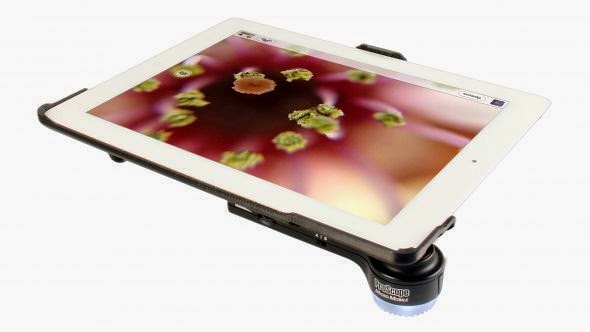I have been a big fan of ActionTec's ScreenBeam Pro Education Edition and have used it successfully in my classroom with my Surface Pro 3 and Dell Venue 8 tablets. Having the ability to walk around my classroom and share my screen without physically being connected to the projector is a real pleasure. Setting up the ScreenBeam Pro is extremely simple and does not require one to connect the device to the existing WiFi network which is a real advantage of the Miracast technology.
When I heard that Actiontec was going to release a new Miracast receiver, I knew I had to get my hands on it and give it a test run. So first, I would like to thank Actiontec
for sending me a ScreenBeam Mini 2 to evaluate. The ScreenBeam Mini 2 is small and looks to be about the size of a USB thumb drive which gets plugged into the HDMI port on your projector or HDTV. If your HDTV has a USB port you can power the ScreenBeam Mini 2 from the port otherwise you can power the receiver with the supplied USB cable and plug. Once plugged in you will see a little LED, light up to tell you the ScreenBeam Mini 2 is powered up. Now simply turn on your HDTV and make sure that you have set the input to HDMI and you should see the Actiontec Screen alert you that it is ready to connect. Now simply swipe in from the right side of your Windows 8.1 tablet and select Devices and connect to the ScreenBeam Mini 2. If you don't see the ScreenBeam Mini 2 receiver listed simply click on Add device and your tablet will discover the ScreenBeam Mini 2. Within seconds you will see the magic happen and your device will be displayed on your television screen. I found that the ScreenBeam Mini 2 connected very quickly to my tablets and the audio quality was superb. ScreenBeam Mini 2 supports 1080 p 30 fps and 2 channel stereo.
When I heard that Actiontec was going to release a new Miracast receiver, I knew I had to get my hands on it and give it a test run. So first, I would like to thank Actiontec
for sending me a ScreenBeam Mini 2 to evaluate. The ScreenBeam Mini 2 is small and looks to be about the size of a USB thumb drive which gets plugged into the HDMI port on your projector or HDTV. If your HDTV has a USB port you can power the ScreenBeam Mini 2 from the port otherwise you can power the receiver with the supplied USB cable and plug. Once plugged in you will see a little LED, light up to tell you the ScreenBeam Mini 2 is powered up. Now simply turn on your HDTV and make sure that you have set the input to HDMI and you should see the Actiontec Screen alert you that it is ready to connect. Now simply swipe in from the right side of your Windows 8.1 tablet and select Devices and connect to the ScreenBeam Mini 2. If you don't see the ScreenBeam Mini 2 receiver listed simply click on Add device and your tablet will discover the ScreenBeam Mini 2. Within seconds you will see the magic happen and your device will be displayed on your television screen. I found that the ScreenBeam Mini 2 connected very quickly to my tablets and the audio quality was superb. ScreenBeam Mini 2 supports 1080 p 30 fps and 2 channel stereo.
For home or school use the ScreenBeam Mini 2 is an ideal receiver when I want to share the contents of my tablets. If you are interested in securing your wireless receiver then you will want to take a look at the ScreenBeam Pro Education Edition. I have tested the ScreenBeam Mini 2 with the Surface Pro 3, Dell Venue 8, and the Nexus 7 ( running Android 4.4) and all have worked well with the receiver. As they say, good things do come in small packages and this is certainly true with regard to ActionTec's ScreenBeam Mini 2. The ScreenBeam Mini 2 is also ideal for the business person who travels and is doing presentations or who wants to watch movies in their hotel room. Check out the ScreenBeam Mini 2 if you are looking for a small Miracast receiver that carries a big punch!









.png)






.png)








